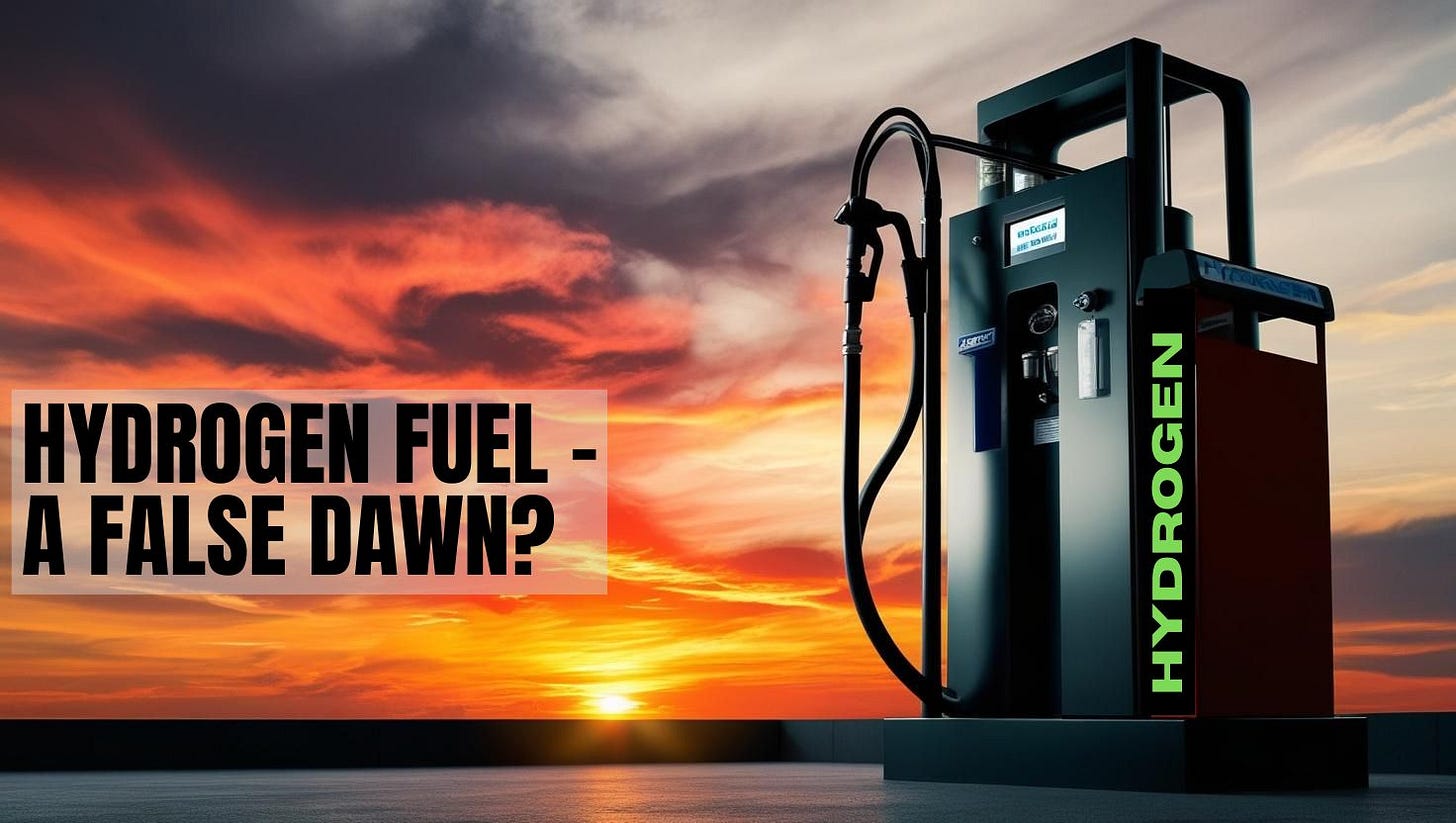The false dawn of hydrogen fuel
Hydrogen is widely touted as the demolition industry’s fuel of the future; a shining green beacon of hope on the horizon that will save us from our diesel dependence. But is it a viable alternative?
Hydrogen fuel is now widely touted as the demolition and construction industry’s fuel of the future; a shining green beacon of hope on the horizon that will save us all from our collective diesel dependence. But is it really a viable alternative? Can we rely upon its availability and its cost? And should we be putting off the adoption of electric power that is widely available today for the promise of a fuel that might be available tomorrow. So is Hydrogen really the answer? Will it arrive in time? Will it be affordable? Or is the demolition and construction industry putting all its eggs into a basket that has yet to be made?
The transition of demolition and construction equipment to hydrogen fuel in the short to medium term is fraught with challenges that cast doubt on its viability. While hydrogen is widely heralded as a clean alternative to fossil fuels, several critical factors impede its immediate adoption in the construction industry.
A significant barrier to the widespread use of hydrogen-powered machinery is the current lack of refuelling infrastructure. The UK's hydrogen network is in its infancy, with National Gas outlining plans to develop infrastructure capable of transporting low-carbon hydrogen. However, these plans are long-term, aiming for substantial development by 2050 (keep that date in mind - It’s important).
The UK has stated its plan to be carbon neutral by 2050. A key part of that plan is to ban the sale of petrol and diesel vehicles by 2030. So there will be a 20 year gap between the end of diesel and petrol vehicles and the switch-on of its expected long-term replacement. This is a repeat of the closure of the UK’s fossil fuelled power stations long before their nuclear replacements are likely to come on line; and it has left the nation facing the very real prospect of an energy shortfall.
In the interim, the absence of a comprehensive hydrogen distribution network currently makes it impractical for construction sites to rely on hydrogen fuel. And it is likely to remain that way for some time.
The production of green hydrogen, which is essential for reducing carbon emissions, remains costly. Labour's plan to double green hydrogen targets to 10GW by 2030 has been met with scepticism due to the significant financial investments required and the current economic climate. The high costs associated with green hydrogen production translate to increased operational expenses for construction companies, making the switch to hydrogen-powered equipment economically unfeasible in the short term.
While manufacturers like JCB have developed hydrogen-powered machinery, such as the hydrogen combustion engine backhoe loader, these innovations are still in the prototype or early adoption stages. The performance, durability, and reliability of hydrogen-powered construction equipment under diverse and demanding site conditions require further validation. Additionally, the development of hydrogen fuel cells suitable for heavy machinery is ongoing, with concerns about efficiency and energy density yet to be fully addressed.
Hydrogen, being highly flammable, poses safety risks that necessitate stringent handling and storage protocols. Construction sites, known for their dynamic and often hazardous environments, would require significant modifications to safely incorporate hydrogen fuel. This includes specialised training for personnel and the implementation of new safety measures, adding layers of complexity and cost to operations.
The current market for hydrogen-powered construction equipment is underdeveloped. In fact, it barely even exists. Manufacturers and suppliers are hesitant to invest heavily in hydrogen technology without clear and consistent demand signals. This creates a cyclical problem: the lack of market-ready equipment discourages infrastructure development, and the absence of infrastructure deters potential adopters. This "chicken and egg" scenario hampers the momentum needed for hydrogen to become a mainstream fuel source in construction.
Battery-electric machinery presents a more immediate and practical solution for reducing emissions in the construction sector. With the rapid advancement of battery technology and the expanding electric charging infrastructure, electric equipment is becoming increasingly viable. This technology offers a more straightforward transition path compared to hydrogen, which requires the establishment of entirely new infrastructure and safety protocols.
Government policies and incentives play a crucial role in the adoption of new technologies. Currently, the UK's policy framework for hydrogen is evolving, with targets set for the coming decades. However, there is a lack of immediate, robust incentives specifically aimed at accelerating the adoption of hydrogen in the construction industry. Without clear policy support, construction firms may be reluctant to invest in hydrogen technology.
In light of these challenges, the prospect of hydrogen becoming the fuel of choice for demolition and construction equipment in the short to medium term appears unlikely. Significant advancements in infrastructure, economic feasibility, technology, safety protocols, market development, and supportive policies are required before hydrogen can be considered a viable alternative to conventional fuels in the construction industry. Until these issues are addressed, stakeholders may find it prudent to focus on more immediately deployable solutions, such as battery-electric technology, to achieve environmental and operational objectives.





